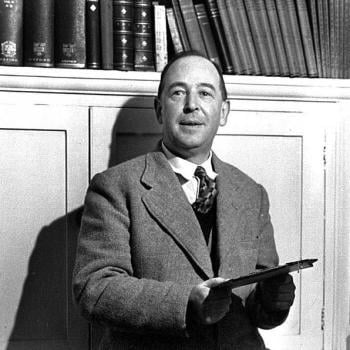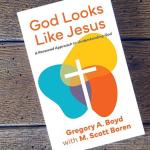An Advent custom, what with the lectionary readings and the various candles of the Advent wreath, is contemplating Christ as the light of the world. We know much more about light than did the ancient Israelites. And I’m astonished at how the scientific facts we know about light apply to the Son of God, whom the Nicene Creed describes as “Light of Light.”
According to contemporary physics, light is a universal constant. It seems to be foundational to the entire physical order, to both matter and energy. Consider Einstein’s famous equation, the validity of which holds up in every empirical study:
That is to say, energy (E) = mass (m) x the speed of light (c) squared (multiplied by itself). Applying high school algebra, it would follow that mass is equal to energy divided by the speed of light squared. And that the speed of light is the square root of energy divided by mass.
Why would the property of light be intrinsic to both mass and energy? This reminds me of the Logos of Greek philosophy, the organizing principle of all things, which John’s gospel identifies with Christ and with light!
In the beginning was the Word [Logos], and the Word [Logos] was with God, and the Word [Logos] was God. He was in the beginning with God. All things were made through him, and without him was not any thing made that was made. In him was life, and the life was the light of men. The light shines in the darkness, and the darkness has not overcome it. (John 1:1-5)
Light is the fastest entity in the universe and, despite science fiction, it is impossible for anything to go faster. We might wonder, how can a photon, the basic “particle” of light, go so fast? It has nothing to propel it, yet it goes 186,000 miles per second, 671 million miles per hour, 6 trillion miles per year. This is possible because light has no mass! Yes, contrary to the materialist worldview, there exists something that is perceivable and measurable, and yet does not consist of matter! (Newton and classical physics defined mass as the “quantity of matter” in an object, though quantum and subatomic physics have had to develop more sophisticated definitions to account for the array of non-materialistic phenomena they are uncovering. Energy doesn’t have mass either.) At any rate, that light has no mass can help us imagine spiritual reality, including the Triune God (“God is light”-1 John 1:15).
Furthermore, light–like Christ–has two simultaneous natures. It is a particle, a photon (which has recently been pictured for the first time), and it is also a continuous wave. (You can see this for yourself in the double-slit experiment: shine light through one slit and it behaves like a group of particles; shine it through two slits, and you see a pattern of black lines, as the split beams of light interfere with each other, like waves. See this video.) Similarly, Christ is both a particular man and the all-pervasive God. He has two natures: human and divine.
Light is also essential for life. By the process of photosynthesis, light creates food for plants, which in turn become food for animals. That process also has the convenient by-product of giving off oxygen, which is another way light is necessary for life. Thus feeds the animals, clothes the lilies of the field, and gives us our daily bread (Luke 12:13-21) by means of light. Just as he feeds and sustains us spiritually by the light of His Christ, the Bread of Life (John 6:35), a reality that shines through the physical bread and the physical wine, both generated by physical light, in the Lord’s Supper (John 6:52-58).
Christ said that “I am the light of the world” (John 8:12). In one conversation I had with someone along these lines, it was suggested that maybe this is more than a metaphor, that perhaps the light that illumines everything around us really might be an actual manifestation of the Son of God. I don’t think we can go that far. Light is described as God’s creation, His first creation (Genesis 1:3-4). Then again, Christ is described as “the firstborn of all creation” (Colossians 1:15).
Not that the Second Person of the Trinity was created. (See this explanation of the Scripture.) As the Nicene Creed says, He is “begotten, not made.” As such, He is “Light of Light.” (See this explanation for that phrase.) Christ is the actual light, of which created light is the expression. That is how John describes Him: “The true light, which gives light to everyone, was coming into the world” (John 1:9). The earthly light that we experience is an image of Him, indeed, is His self-expression.













